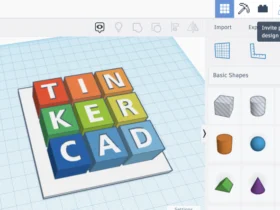In the rapidly evolving world of technology, Artificial Intelligence (AI) continues to break new ground, pushing the boundaries of innovation and creativity. Among its myriad applications, Character AI stands out as a fascinating domain, merging the realms of storytelling, gaming, and interactive experiences with cutting-edge AI technology. This deep dive aims to explore the intricacies of Character AI, its applications, challenges, and future prospects, providing a thorough understanding of its impact and potential.
Understanding Character AI
Character AI refers to the deployment of artificial intelligence to create, animate, and govern digital characters with human-like traits and behaviors. These AI-driven entities can interact, respond, and adapt to user inputs or environmental changes in real-time, offering a dynamic and immersive experience. The foundation of Character AI lies in complex algorithms, natural language processing (NLP), machine learning (ML), and sometimes, elements of generative adversarial networks (GANs). These technologies enable digital characters to exhibit a wide range of emotions, responses, and actions that mimic human behavior, making them more relatable and engaging for users.
The Spectrum of Applications
The applications of Character AI span various sectors, from entertainment and education to customer service and mental health support. In gaming and virtual reality (VR), Character AI enhances the narrative depth and interactivity, allowing players to engage with characters that learn and evolve based on player choices. Educational platforms leverage Character AI to create interactive tutors or companions that can adapt to a student’s learning pace, style, and preferences, making education more personalized and engaging.
In the realm of customer service, AI-driven characters serve as virtual assistants, capable of handling inquiries, providing support, and even engaging in small talk, thereby humanizing the customer service experience. Furthermore, in the mental health domain, Character AI offers a promising avenue for creating therapeutic bots that can offer support and companionship, particularly for individuals seeking anonymous or accessible mental health assistance.
The Technical Backbone
Delving into the technical aspects, the development of Character AI involves a multi-disciplinary approach, incorporating elements from computer science, psychology, linguistics, and even ethics. At the core, NLP enables these characters to understand and process human language, facilitating meaningful conversations. Machine learning, particularly reinforcement learning, allows characters to learn from interactions and improve over time, making them more responsive and intelligent.
Creating emotionally intelligent characters also involves the use of affective computing, enabling AI to detect and respond to human emotions through text, voice, or even facial expressions. This emotional intelligence is crucial for creating characters that can engage users on a deeper, more empathetic level.
Ethical Considerations and Challenges
As with any advanced AI application, Character AI raises important ethical questions and challenges. The creation of highly realistic and emotionally intelligent characters blurs the line between reality and virtuality, potentially leading to issues related to emotional attachment, privacy, and the misuse of AI for deceptive purposes. Ensuring transparency, privacy, and ethical use of data in Character AI applications is paramount to fostering trust and safety in these interactions.
Moreover, the challenge of the “uncanny valley” – a term used to describe the eerie or unsettling feeling people get when an AI or robot closely resembles a human but is not quite lifelike – remains a significant hurdle in making Character AI widely acceptable and comfortable for all users.
Future Prospects and Innovations
Looking ahead, the future of Character AI is brimming with possibilities and poised for groundbreaking innovations. Advances in AI and ML, coupled with improvements in graphics and processing power, will enable the creation of even more lifelike, intelligent, and emotionally responsive characters. The integration of augmented reality (AR) and VR with Character AI promises to revolutionize storytelling, gaming, and social interactions, offering experiences that are more immersive and personalized than ever before.
In the realm of healthcare and therapy, the potential for AI characters to act as companions or therapists could transform mental health support, making it more accessible and less stigmatized. Furthermore, as conversational AI continues to evolve, we can anticipate more nuanced and complex interactions with AI characters, making them indispensable companions, guides, and assistants in various aspects of daily life.
Conclusion
Character AI represents a thrilling convergence of technology, creativity, and human interaction, offering a glimpse into a future where digital and real-world experiences blend seamlessly. While challenges and ethical considerations abound, the potential benefits and applications of Character AI are vast and varied. As technology advances, it is crucial to navigate these developments with a focus on ethical standards, user well-being, and the enhancement of human experiences. The journey of Character AI is just beginning, and its trajectory promises to reshape our interaction with technology in profound and exciting ways.
Frequently Asked Questions (FAQs)
What are the applications of Character AI?
Character AI has a broad range of applications, including but not limited to:
- Gaming and Virtual Reality: Enhancing the interactivity and narrative depth of games and VR experiences.
- Education: Creating personalized learning experiences with AI tutors or companions.
- Customer Service: Providing 24/7 support through virtual assistants that can handle inquiries and engage in conversation.
- Mental Health: Offering support and companionship through therapeutic bots designed for mental health assistance.
What are the challenges associated with Character AI?
Challenges in Character AI include creating characters that are relatable and engaging without falling into the “uncanny valley,” ensuring privacy and ethical use of data, and managing the computational resources required for real-time interactions. Additionally, there are concerns about emotional attachment to AI characters and the potential misuse of the technology.
How is emotional intelligence integrated into Character AI?
Emotional intelligence in Character AI is achieved through affective computing, which involves the AI’s ability to detect and appropriately respond to human emotions. This can be done through analyzing text, voice intonations, facial expressions, and other forms of human communication. Emotionally intelligent characters can adapt their responses based on the emotional context of the interaction, making them more engaging and lifelike.




















